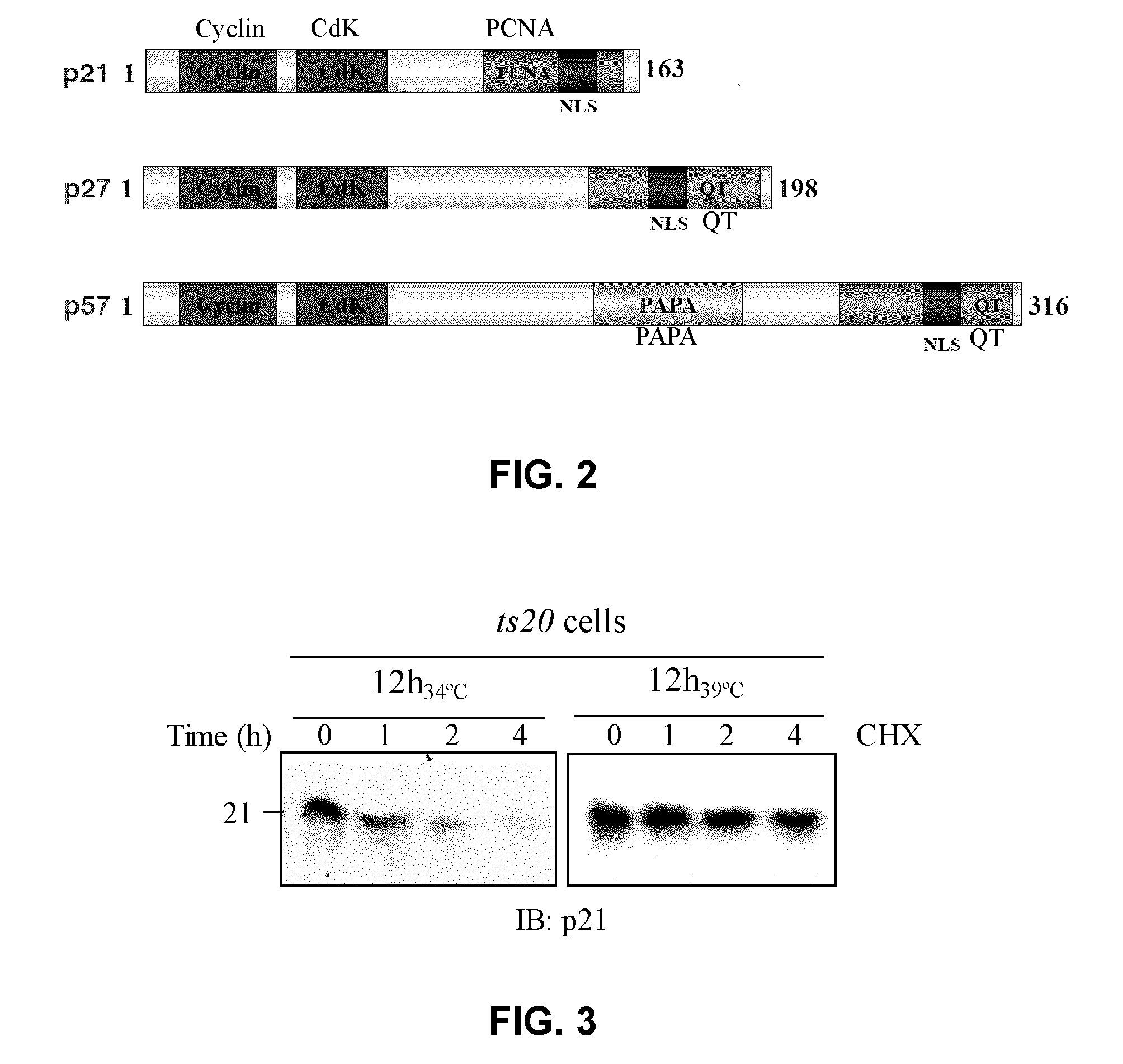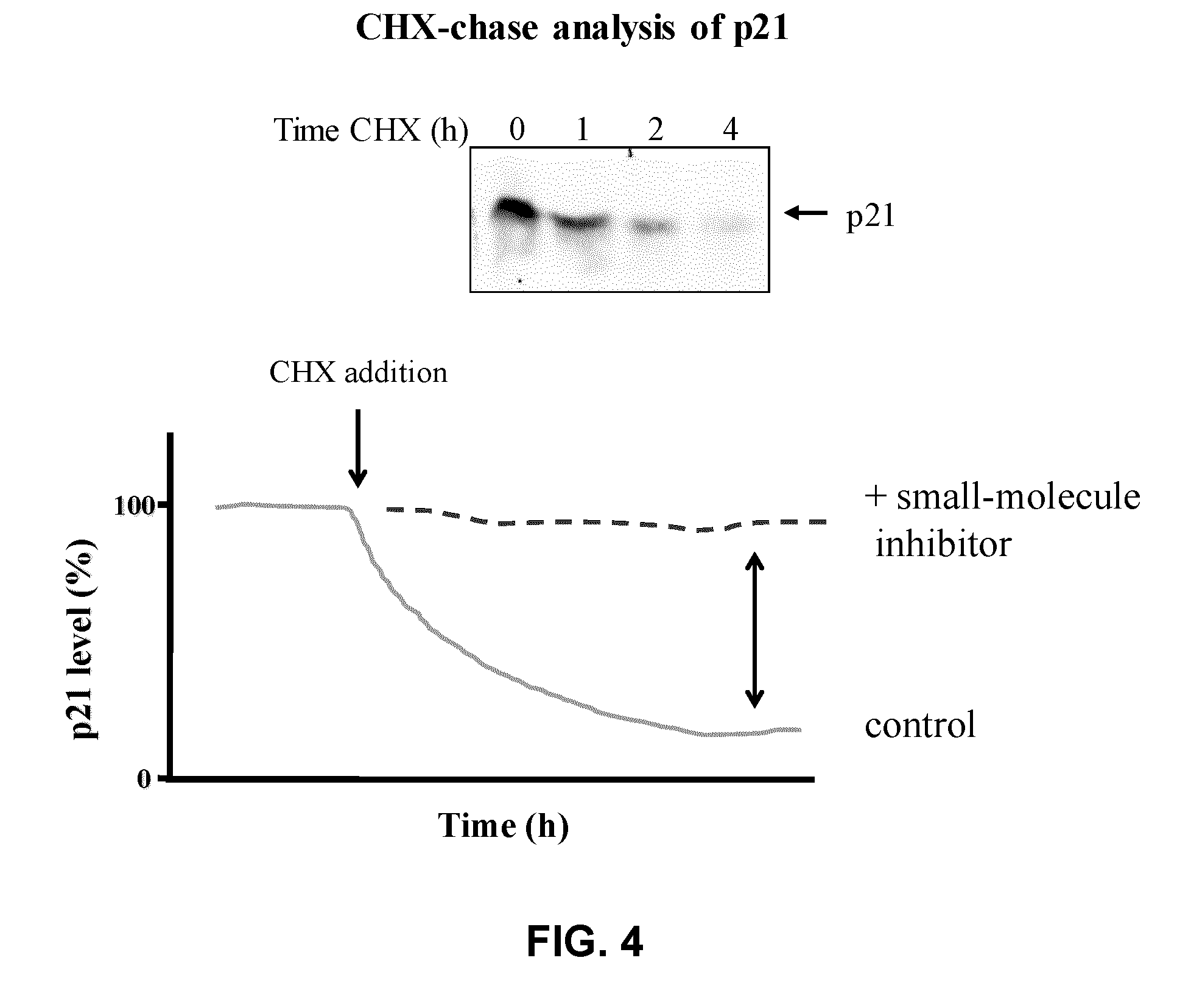Assay for inhibitors of cip/kip protein degradation
a technology of cip/kip protein and inhibitor, which is applied in the field of screening assays and systems for the identification of inhibitors of p21 degradation, can solve the problems of poor prognosis and frequent downregulation of levels, and achieve the effect of high throughput screening
- Summary
- Abstract
- Description
- Claims
- Application Information
AI Technical Summary
Benefits of technology
Problems solved by technology
Method used
Image
Examples
example 1
Materials and Methods
[0093]Generation of p21-Rluc Protein Fusion
[0094]The human p21Cip1 (p21) and Renilla luciferase (Rluc) genes were amplified by polymerase chain reaction (PCR) from plasmids pRmHa-5 HA-p21Cip1 and pcDNA3.1-Rluc respectively. PCR products were digested and ligated into a modified version of pRevTRE vector (Clonetech) previously digested with BamHI and NotI restriction enzymes. The final recombinant molecules (pRevTRE Rluc and pRevTRE-p21-Rluc) were sequenced to ensure the integrity of DNA.
[0095]Generation of Rat1 rtTA Stable Cell Line
[0096]Human Embryonic Kidney 293T cells were transfected with pCL-Eco and pRevTet-On vectors in order to produce retroviral particle bearing the reverse tet-transactivator transgene (rtTA). Rat1 cells were infected with these retroviruses and selected with G418 for 2 weeks to generate the Rat1 rtTA cell line.
[0097]Generation of Rat-1 rtTA Inducible Rluc / p21-Rluc Stable Cell Lines
[0098]Human Embryonic Kidney 293T cells were transfected...
example 2
High-Throughput Screening (HTS)-Compatible Cell-Based Assay
[0101]To identify small molecules that lead to an increase in the expression levels of p21, a highly robust HTS-compatible cell-based assay using a reporter protein made of a fusion between the unstable p21 protein and Renilla luciferase (p21-Rluc) was designed. The assay relies on the generation of a fusion protein between p21 and a reporter protein that is quantifiable in a high throughput format. The genetically engineered chimeric protein should behave like the wild type p21 protein, such that the readout signal from the reporter moiety will reflect the regulation of p21. Two fusions proteins were initially constructed: a fusion between p21 and the Renilla luciferase (p21-Rluc) and a fusion between p21 and the GFP protein (p21-GFP) (FIG. 5A)
[0102]Luciferase activity is detected by measuring bioluminescence after addition of coelenterazine to intact cells, whereas GFP expression is measured by fluorescence spectroscopy. T...
PUM
| Property | Measurement | Unit |
|---|---|---|
| Time | aaaaa | aaaaa |
| Bioluminescence | aaaaa | aaaaa |
Abstract
Description
Claims
Application Information
 Login to view more
Login to view more - R&D Engineer
- R&D Manager
- IP Professional
- Industry Leading Data Capabilities
- Powerful AI technology
- Patent DNA Extraction
Browse by: Latest US Patents, China's latest patents, Technical Efficacy Thesaurus, Application Domain, Technology Topic.
© 2024 PatSnap. All rights reserved.Legal|Privacy policy|Modern Slavery Act Transparency Statement|Sitemap



